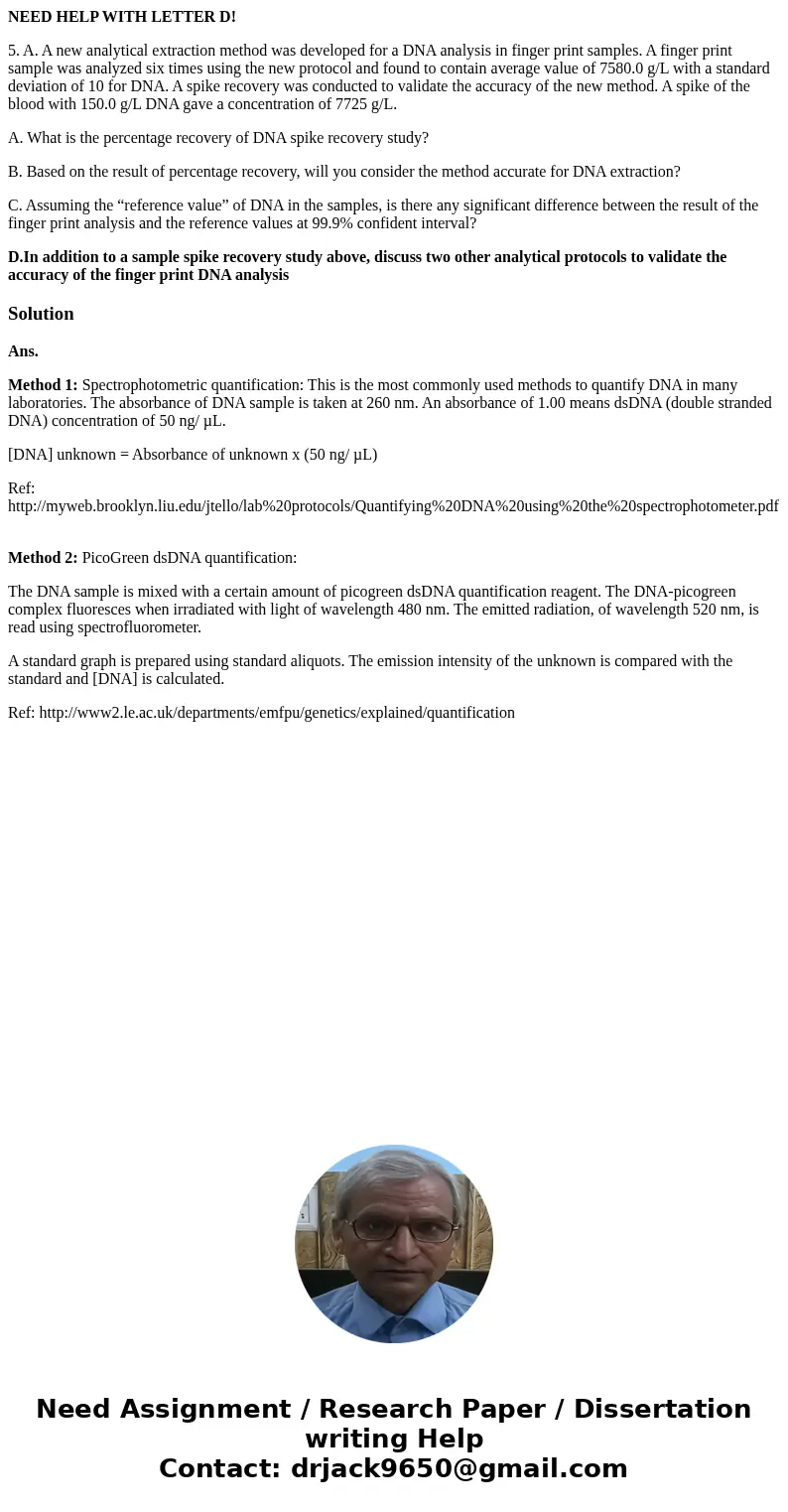NEED HELP WITH LETTER D 5 A A new analytical extraction meth
NEED HELP WITH LETTER D!
5. A. A new analytical extraction method was developed for a DNA analysis in finger print samples. A finger print sample was analyzed six times using the new protocol and found to contain average value of 7580.0 g/L with a standard deviation of 10 for DNA. A spike recovery was conducted to validate the accuracy of the new method. A spike of the blood with 150.0 g/L DNA gave a concentration of 7725 g/L.
A. What is the percentage recovery of DNA spike recovery study?
B. Based on the result of percentage recovery, will you consider the method accurate for DNA extraction?
C. Assuming the “reference value” of DNA in the samples, is there any significant difference between the result of the finger print analysis and the reference values at 99.9% confident interval?
D.In addition to a sample spike recovery study above, discuss two other analytical protocols to validate the accuracy of the finger print DNA analysis
Solution
Ans.
Method 1: Spectrophotometric quantification: This is the most commonly used methods to quantify DNA in many laboratories. The absorbance of DNA sample is taken at 260 nm. An absorbance of 1.00 means dsDNA (double stranded DNA) concentration of 50 ng/ µL.
[DNA] unknown = Absorbance of unknown x (50 ng/ µL)
Ref: http://myweb.brooklyn.liu.edu/jtello/lab%20protocols/Quantifying%20DNA%20using%20the%20spectrophotometer.pdf
Method 2: PicoGreen dsDNA quantification:
The DNA sample is mixed with a certain amount of picogreen dsDNA quantification reagent. The DNA-picogreen complex fluoresces when irradiated with light of wavelength 480 nm. The emitted radiation, of wavelength 520 nm, is read using spectrofluorometer.
A standard graph is prepared using standard aliquots. The emission intensity of the unknown is compared with the standard and [DNA] is calculated.
Ref: http://www2.le.ac.uk/departments/emfpu/genetics/explained/quantification

 Homework Sourse
Homework Sourse